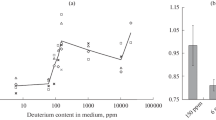Abstract
Unanesthetized, resting dogs were infused through a leg vein for approximately 90 min with 1-14C-palmitate and oleate-9,10-H3 complexed to albumin. The animals were then anaesthetized, exsanguinated, and the kidneys removed. Lipids were extracted from the medullae and cortices with chloroform-methanol (2∶1) and the lipid classes were analyzed for radioactivity content and fatty acid composition. Triglyceride subclass species were determined by silver nitrate thin layer chromatography. The triglyceride content of the medulla was much higher than that of the cortex while the phospholipid level was slightly higher in the cortex. The fatty acid composition of triglyceride and phospholipid was not demonstrably different, in the medulla, or cortex. The amount of monounsaturated triglyceride species (001) was lower and the tetra- (022) and more unsaturated species were higher in the cortex than in the medulla. Most of the radioactivity was found in the phospholipid fraction and a large portion of the remainder was in triglyceride. Cortical phospholipids contained 80% of the radioactivity versus a value around 60% in the medulla, whereas triglyceride, in the medulla, was approximately 26% compared to the cortical content of 15%. The results, with respect to the per cent distribution of radioactivity, were similar for radiocarbon and tritium. The cortex possessed a higher specific activity, for oleate and palmitate in both triglyceride and phospholipid. The total kidney retained 0.25% of the infused palmitate and 0.08% of the infused oleate.
Similar content being viewed by others
References
Chinard, F. P., W. R. Taylor, M. F. Nolan and T. Enns, Am. J. Physiol., 196:535–544, (1959).
Hohenleitner, F. J., and J. J. Spitzer, Ibid. 200:1095–1098 (1961).
Gold, M., and J. J. Spitzer, Ibid. 206:153–158 (1964).
Kramer, K., K. Thurau and P. Deetjen, Pfluegers Arch. Ges. Physiol. 270:251–269 (1960).
Lee, J. B., V. K. Vance and G. F. Cahill, Am. J. Physiol. 203:27–36 (1962).
Folch, J., M. Lees, and G. H. Sloane-Stanley, J. Biol. Chem. 226:497–509 (1957).
Christophe, A., and F. Matthijs, Clin. Chem. Acta 16:39–43 (1967).
Bray, G. A., Anal. Biochem., 1:279–285 (1960).
Gold, M., Lipids 3:539–544 (1968).
Evans, J. R., Circulation Res. 15:96–106 (1964).
Gold, M., Lipids 4:288–292 (1969).
Morgan, T. E., D. O. Tinker and D. J. Hanahan, Arch. Biochem. Biophys. 103:54–65 (1963).
Karlsson, K.A., B.E. Samuelsson and G. O. Steen, Acta Chem. Scand. 22:2723–2724 (1968).
Author information
Authors and Affiliations
About this article
Cite this article
Gold, M. An investigation of the lipid metabolism of dog kidney medulla and cortex. Lipids 5, 293–298 (1970). https://doi.org/10.1007/BF02531460
Received:
Issue Date:
DOI: https://doi.org/10.1007/BF02531460



